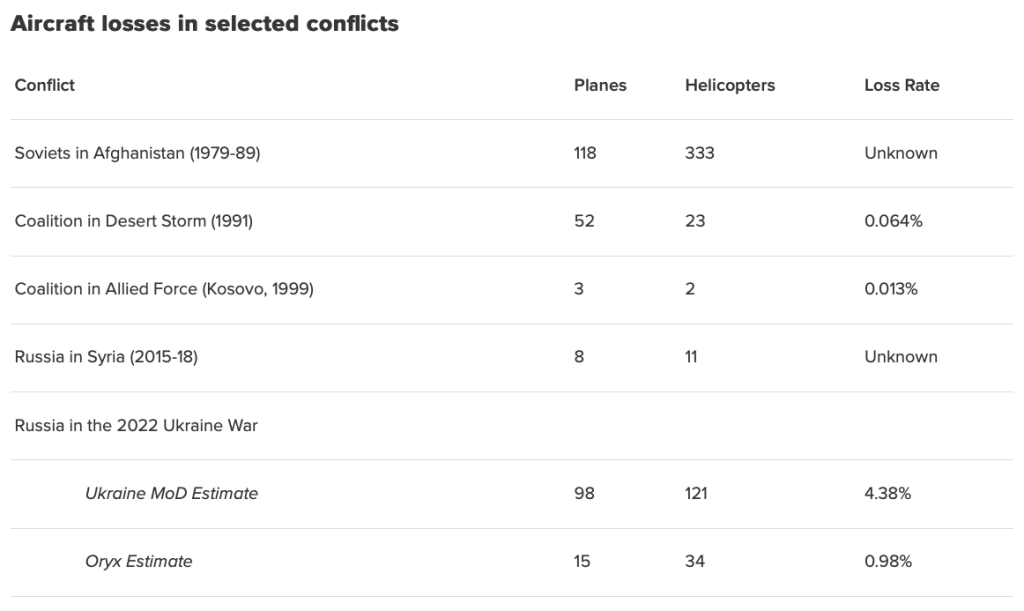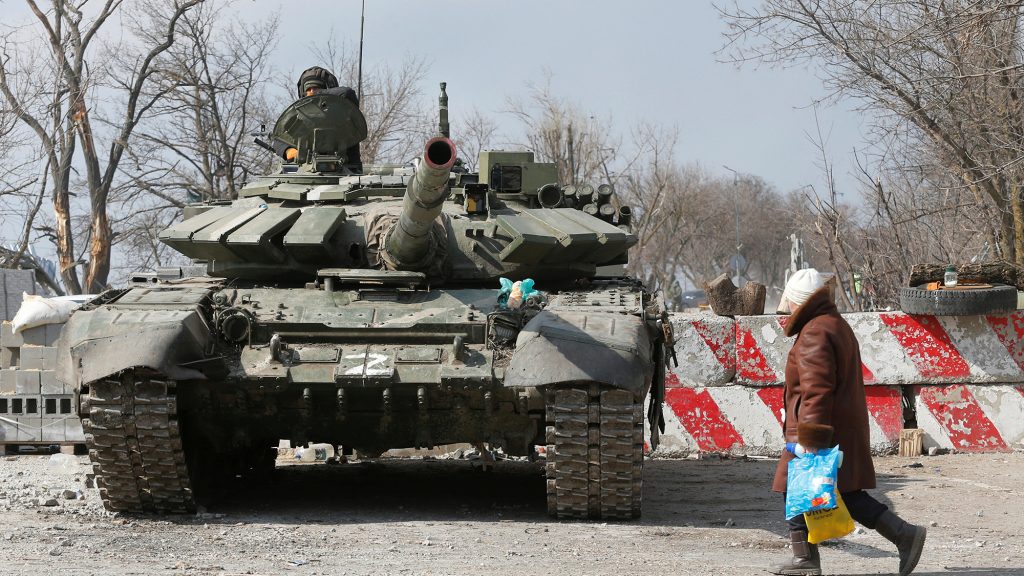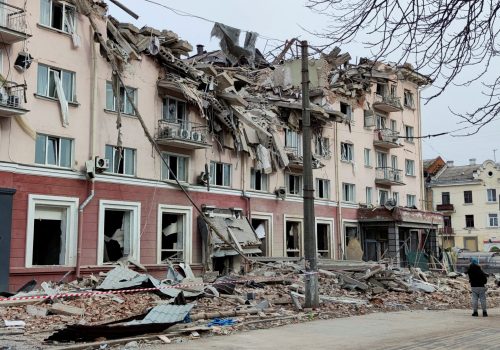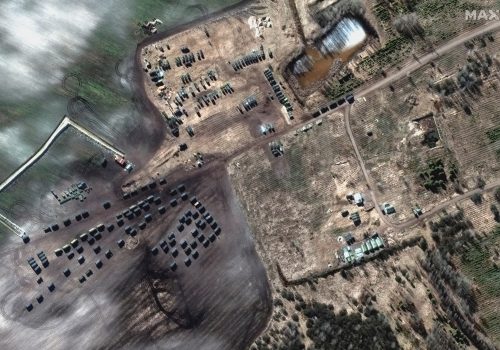In light of the ongoing Russia crisis, the Scowcroft Center’s Forward Defense (FD) practice will share weekly assessments of the latest force developments surrounding Ukraine, leveraging the expert perspectives of our senior military fellows. The opinions, conclusions, and recommendations expressed or implied here are solely those of the authors and do not represent the views of the Department of Defense or any other US government agency.
The bottom line
Russian progress has slowed across all areas of operations, and the Kremlin has increasingly focused on siege tactics and indiscriminate destruction of major Ukrainian cities. Huge Russian losses in both personnel and equipment, continued resupply and logistics woes—coupled with a dug-in and determined Ukrainian resistance— lead us to believe that a major Russian breakthrough is highly unlikely. Russia has set its sights on forming a land bridge from Crimea to the Donbas, seeing control of the city of Mariupol as key to realizing this goal. Russia continues to threaten Odesa with the prospect of an amphibious operation, though it would be strategically unwise for Russia to begin another major offensive while its forces are halted around Kyiv, Kharkiv, and Mariupol. Russia has increased its threats against expanded US and NATO intervention in the war, both via rhetoric and actions designed to signal willingness and ability to strike western targets. We expect Russian air and missile attacks will continue at roughly the same rate as the last two weeks, and indiscriminate artillery, rocket, and mortar attacks will continue to devastate major Ukrainian cities.
Russian military movement
Air and air defense: Russia has still failed to establish air superiority and is suffering huge aircraft losses as a result. We find it highly unlikely that either side will establish air superiority over Kyiv in the coming weeks.
- Making sense of Russian aircraft losses. Every day, the Ukrainian Ministry of Defense (MoD) releases its estimated Russian losses of personnel, vehicles, and aircraft. Ukraine’s numbers far surpass what has been confirmed via video and photographs. As of March 21—the twenty-fifth day of the war—the Ukrainian Ministry of Defence (MoD) claimed that Russia had lost ninety-seven planes, one hundred and twenty-one helicopters, and twenty-four unmanned aerial vehicles (UAVs), an astounding and unsustainable loss rate. Open-source intelligence (OSINT) analysis site Oryx maintains a running total of damaged, destroyed, abandoned, or captured Russian equipment, so far confirming the loss of fifteen planes, thirty-five helicopters, and thirteen UAVs. The truth likely rests somewhere in between these two estimates, but regardless of which numbers you use, Russia’s aircraft losses per combat mission (or sortie) are many times higher than those of the US-led coalition in Desert Storm. If we assume Russia has flown five thousand sorties through March 20 (based on the US Department of Defense’s estimate of two hundred per day) and use Oryx’s conservative loss numbers, Russia has a loss rate (for planes and helicopters only) of 0.98 percent per sortie, an order of magnitude greater than the coalition’s in Desert Storm. Russia’s total aircraft losses exceed any single month of the Soviet Union’s disastrous invasion of Afghanistan from 1979-1989. With losses likely much higher than Oryx’s numbers, Russia’s air forces are being depleted at an unsustainable rate

- Dawn of the hypersonic… maybe. On March 19, the Russian MoD announced it had used a Kh-47M2 “Kinzhal” hypersonic missile to destroy an underground weapons depot approximately three hundred miles southwest of Kyiv. If confirmed, this would be the first operational use of an air-launched hypersonic (greater than Mach 5.0, or five times the speed of sound) weapon. Questions about the veracity of the claim quickly surfaced, as geolocation showed the target to be an apparent farm in the far east of Ukraine—not in the southwest as Russia claimed. Even if Russia’s claim about the target were accurate, there would be no need to hit it with an air-launched hypersonic weapon. It is possible that the weapon used was the ground-based Iskander-M tactical ballistic missile. We assess that the Kremlin announced the use of the Kinzahl to signal to the United States and NATO that Russia can and will respond to increased intervention in the conflict, including with the use of nuclear weapons. This is likely part of a larger Russian campaign designed to deter increased NATO action in Ukraine.
- Russia ramping up threats against foreign “intervention.” On March 12, Russia threatened to target US and European weapons supplies to Ukraine. The next day, Russia launched a missile attack on a Ukrainian training base only ten miles from the Polish border. The base was previously used by the United States and other NATO nations to train Ukrainian forces on NATO weapons standards. On March 18, Russian Foreign Minister Sergei Lavrov said that any weapons shipments to Ukraine would be considered legitimate military targets. The day after Lavrov’s comments, the Russian MoD claimed it successfully employed the air-launched Kinzahl hypersonic weapon discussed above. We believe these comments and actions are designed to send a clear message to the United States and NATO that the Kremlin will not accept further NATO intervention.
Ground forces. The Kremlin’s consistent artillery and rocket fire into Ukrainian cities suggest that Russian ammunition supply remains sufficient. Russia’s shift to more stationary siege tactics is allowing it to improve its rear-area security and strengthen its supply chains.
- Siege warfare. Russia has demonstrated that it can supply its artillery and long-range fires with ammunition to support its siege tactics. Mariupol may be the test for whether new Russian tactics will be successful, as it tries to force capitulation through increased shelling.
- Russian logistics. Ukraine’s attacks on Russian supply lines are taking their toll. Early in the war, Ukraine disabled the railheads from Russia into Ukraine, significantly impacting Russia’s ability to position supply stockpiles along its axes of advance. Russia has depended primarily on trucks to resupply its forces but does not have enough trucks to sustain its force to optimum levels further than ninety miles from supply hubs. Russia is likely prioritizing ammunition shipments over other essential supplies such as food, fuel, and repair parts.
- Information warfare. Externally, Russian indiscriminate firing on civilian areas has pushed nations to increase their materiel and financial support to Ukraine. Reports indicate that, inside Russia, many citizens can still get reliable information about the war from outside sources, via virtual private networks, which have exposed high casualty rates and contributed to decreased support for the war.
Naval forces. Russia continues to enjoy naval superiority in the Black Sea and will continue to attack west along the coast to complete the land bridge from the Donbas. We predict that Odesa is the next target for Russian forces. Russia will use the Black Sea Fleet to provide Naval Surface Fire Support (NSFS) to augment its ground-based rocket and artillery fire.
- Naval warfare. The Japanese Defense Ministry reported the movement of Russian amphibious ships from the Pacific Fleet, which Japan believes are moving Russian Naval Infantry to reinforce the invasion of Ukraine. It is unclear whether the naval infantry are disembarking at Vladivostok (near Russia’s border with North Korea) and moving west over rail, or if elements of the Russian Pacific Fleet will sail to the Black Sea. If Russia is attempting to reinforce by sea, Turkey has the right under the Montreux Convention to block Russian warships from the Pacific Fleet from entering the Black Sea, as they are not homeported there. Turkey exercised this right when it denied three Russian warships passage through the Bosporus on February 27.
- Amphibious operations. The possible movement of Russian naval infantry from the Pacific Fleet to Ukraine does not alter our assessment that there is low likelihood of a Russian attempt at an opposed amphibious assault against Odesa.
Subscribe to our weekly military assessment
Sign up for updates from Forward Defense to hear the latest on the trends, technologies, and military challenges shaping tomorrow.
US, allied, and partner deployments
Materiel supply to Ukraine. On March 16, the United States approved eight hundred million dollars in funding for additional security assistance for Ukraine’s defense, which should help extend the Ukrainian resistance. Ukraine is also supplementing its combat power with captured Russian equipment and supplies. Sea supply routes into Ukraine remain entirely cut off, and aerial resupply remains severely restricted, but ground resupply routes remain open through Poland and Romania. While Russia has threatened to attack external supply lines, it has not yet significantly impacted these routes.
Last week, we identified critical capabilities needed by the Ukrainian military. Those needs remain valid, and many are being met by the latest package of security assistance. However, new needs are emerging as Russia transitions away from lightning war and toward a war of attrition. Russian forces are taking up static positions around Ukraine’s major cities to conduct siege operations and mass indiscriminate rocket and artillery fire on population centers. This presents Ukraine with an opportunity to increase Russia’s already unsustainable losses if the nation can respond to Russian attacks with massed fires of its own. NATO members Croatia, Romania, Poland, and Bulgaria operate Russian-made BM-21s. These systems should be offered to Ukraine. In return, the United States could provide those countries M142 High Mobility Artillery Rocket System (HIMARS) to replace their BM-21s. Romania and Poland already operate HIMARS, so this will speed their modernization process. The addition of HIMARS will increase Croatia’s and Bulgaria’s interoperability with the United States. Additional BM-21s pose a minimal risk of escalation. Ukraine has employed its BM-21s since the beginning of the conflict and, with a range of approximately twenty-eight miles, this weaponry does not pose a strategic threat to Russian territory.
FD’s conclusion
This week provided further evidence that Russia has abandoned its goals of rapid victory, now focusing on a protracted war of attrition in order to achieve an acceptable peace settlement that gives the Kremlin a “win.” We continue to see the brutal, indiscriminate attacks on residential areas and the utter destruction of whole city blocks that Russia used in both Grozny, Chechnya and Aleppo, Syria.
Russian offensive momentum has stalled in each area of operations. In the north, Russian forces made incremental progress towards the capital, but the risk of Kyiv falling and/or President Volodymyr Zelenskyy being deposed or forced to depart the capital have declined dramatically. In the east, Russian forces have made minor progress in the consolidation and control of the entire Donbas region, and that now appears to be one of Russia’s primary strategic goals in the campaign. In the south, where Russia was initially most effective, the Kremlin’s advance has stalled, making no westward progress from Crimea towards Odesa. The eastward thrust from Crimea to the Donbas is similarly stalled as Russia attempts to subjugate (or annihilate) Mariupol.
A major reason for Russia’s slowing progress is its horrific loss rates. Surprisingly, on March 21, the pro-Kremlin Komsomolskaya Pravda newspaper briefly posted plausible yet unconfirmed Russian troop loss rates, saying 9,861 troops had died in the war and 16,153 had been injured. The report was quickly taken down and the paper claimed it had been hacked. Considering Russia deployed around 200,000 troops to the region, these numbers indicate that Russian fatalities are approaching 4.5 percent of the force, with more than 8 percent suffering injuries. This totals an astounding 12.5 percent casualty rate, which is likely disproportionately borne by combat troops, as opposed to support troops behind the front lines. This loss rate is likely a major factor in the slowing Russian advance, as Moscow is running out of fresh troops to throw into the fight and create offensive momentum.
As Russian hopes for a complete victory over Ukraine have evaporated, Russia appears to have revised its objectives to force Ukraine into accepting disadvantageous peace terms. The Grozny/Aleppo tactics of razing major cities, Russia’s complete control of the northern Black Sea, and the greatly reduced ability to airlift supplies into a combat zone are strangling the Ukrainian economy, further raising the specter of a devastating famine later this spring and summer. Despite military setbacks, Russia still holds large tracts of Ukrainian territory and can continue to impose heavy costs on the Ukrainian people via brutal attacks on civilian areas of cities. Russia will likely attempt to leverage the pressure generated by these factors to force Ukraine into concessions in peace negotiations. Additionally, Russia has ramped up its threats against expanded intervention in the conflict, signaling that it will potentially target future weapons deliveries to Ukraine.
Meet the FD team
Today’s briefing is brought to you by senior US Army fellow COL Benjamin Johnson, senior US Air Force fellow Lt Col Tyson Wetzel, and senior US Marine Corps fellow Col J.B. Barranco. The Scowcroft Center Military Fellows Program, housed by the Forward Defense practice, hosts military fellows from participating branches of the US military and the armed forces of US allies and partners each year as part of a twelve-month fellowship program.
Further reading
Wed, Mar 16, 2022
Punish Putin for past and present crimes
New Atlanticist By Gissou Nia, Jomana Qaddour
Justice will remain incomplete if the dots aren't connected among Putin’s crimes in Chechnya, Syria, and Ukraine.
Mon, Mar 14, 2022
Russian War Report: Russian false-flag operation seeks to drag Belarus into Ukraine war
New Atlanticist By
Ukrainian media reported that Russia attacked a Belarusian village from Ukrainian airspace in an attempt to make it appear that Ukraine had attacked Belarus and provoke Belarusian President Lukashenka to move troops into Ukraine.
Thu, Mar 10, 2022
UK foreign minister: Putin’s invasion of Ukraine is a ‘paradigm shift on the scale of 9/11’
Event Recap By
Foreign Secretary Liz Truss warned that Putin has shaken the global security architecture by invading Ukraine and declared the "era of complacency" over.
Image: A local resident walks past a tank of pro-Russian troops during Ukraine-Russia conflict in the besieged southern port city of Mariupol, Ukraine on March 18, 2022. Photo via REUTERS/Alexander Ermochenko.



